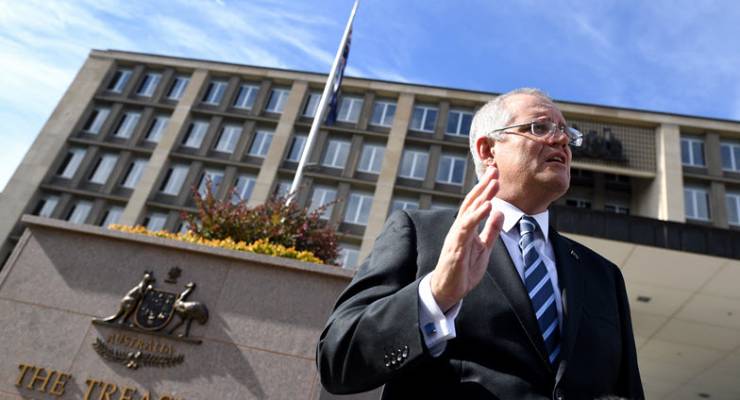
The Turnbull government has veered sharply to the left and unveiled a big tax-and-spend budget for 2017-18 designed to win favour with voters while pushing debt higher.
The Coalition has already been spending and taxing at significantly higher levels than under Labor, but the spending will kick into overdrive as the government seeks to restore its political fortunes.
To fund big spending on infrastructure projects, its surrender in the Gonski school funding debate and on Medicare and pharmaceuticals, the Turnbull government is hitting the big banks with a new levy intended to raise more than $6 billion over forward estimates, and increasing the Medicare levy from 2019 by half a percentage point, generating another $8.2 billion at the back end of forward estimates.
As a result, government spending will rise by $8 billion over forward estimates compared to just six months ago, when Scott Morrison unveiled his mid-year update; capital investment will also surge over the same period, but tax revenue will also lift by $10 billion. Net government debt will be pushed to a new peak, a monster $375 billion in 2018-19, but it will peak sooner than forecast in the Mid-Year Economic and Fiscal Outlook.
The budget predicts a steady-as-she-goes economy, with some sounder-looking forecasts than in the 2016 budget. The economic forecasts in that budget were savaged for being too optimistic – something borne out by a further downgrading of the current year (2016-17) GDP growth forecast to 1.75% today, when this time last year the prediction was for 2.5% (and 1.75% is low — is the government expecting a bad fourth quarter?). This time around, the GDP growth forecast is 2.75%, but nominal GDP growth is expected to be 4% — less strong than pre-budget speculation suggested. Wages growth will continue to remain subdued, with the Wage Price Index lifting, but only to 2.5%. Unemployment (at 5.75%) will also remain a little higher than believed just six months ago, when it was expected to fall to 5.5%. Scott Morrison and Treasury have gone conservative on their forecasts, and they deserve credit for it.
The government’s infrastructure spend centres on two major New South Wales projects: a massive $8.4 billion on the National Party’s favourite boondoggle, a Melbourne-to-Brisbane rail link through inland NSW, with the funding to be allocated across seven years; and western Sydney airport will receive $5.3 billion for a new government company to develop the facility.
Overall, the budget deficit is up for both this current financial year and 2017-18, compared to forecasts just six months ago, but the promised return to surplus is finally into the fourth year of forward estimates. Nonetheless, 2017-18 will mean another $30-odd billion dollars in deficit spending pumped into an economy that is still travelling below its long-term trend.
The era of debt-and-deficits alarm from the Coalition has been washed away in a flood of red ink – but Morrison insists the end of the deluge is in sight. And there’s more reason than this time last year to believe him.








“Howard-Costello 2.0” – spending our money trying to buy popularity?
“I love this gormless Treasurer
A clown of sweeping claims,
A judge of good and bad debt –
How good’s their boundless trains?
His bottomless pork barrels,
To buy popularity
When money is no object,
Paid for by you and me!”
I wonder, given how utterly inept the government is at managing Parliamentary business, if they’ll be able to get this Budget through the Senate – how many tory nutters will revolt because of the ta&spend against which they’ve spent their entire political careers ranting?
And yet, it still does nothing for the real abuses in our society such as house prices, stagnant wages & disappearing jobs, as well as that climate change thangy.
OK, the Melbourne-to-Brisbane rail link proposals in their current form are boondoggles as you say and reportedly do not stack up. But are we, therefore, stuck with the current state of the very slow rail network for ever? For the benefit of regional cities and towns more so than commuting between capitals, surely we could employ at least some moderate-speed rail?
It’s only for freight, as far as I know.
Centrists should be worried that the party that was by all appearances ideologically opposed to more debt have accelerated the national debt. I know MMT fans will go ‘oh we can borrow forever’ but this points to another problem: Australia needs deficit spending or the capitalist mode of production will completely topple over within Australia. The subsidies, stagnating wages topped off with private debt and low-to-nonexistent taxes are the only things keeping The Economy in profit.